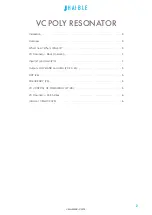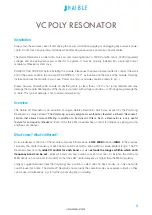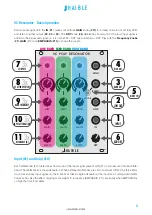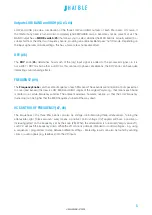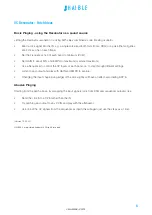
JHAIBLE.COM
J
H A
I B L E
5
Outputs LOW, BAND and HIGH (#2, #3, #4)
LOW and HIGH provide a combination of the three LOW and HIGH outputs of each filter band . Of course, if
the GAIN of any band is turned down completely (and EMPHASIS also), a band may not be present at all . The
BAND output has a
MODE switch
(
#5
) that allows you to select whether the MED band is actually added to or
subtracted from the other two frequency bands, providing an additional Band pass “notch”mode . Depending on
the input signal and module settings, this has a more or less noticeable effect .
DRY (#6)
The
DRY
knob (
#6
) determines how much of the (dry) input signal is added to the processed signal, i .e . it is
not a WET / DRY mix but rather a +DRY . As this can lead to phase cancellations, the DRY knob can have quite
interesting sound shaping effects .
FREQUENCY (#9)
The
Frequency knobs
sets the center frequency of each filter band . These bands are not identical, but spaced out
to cover (and exceed) the classic LOW, MED and HIGH ranges of the original Polymoog - that means each band
is limited to a certain frequency window . The adjacent windows, however, overlap, so that the LOW frequency
(turned up) can be higher that the MED frequency turned all the way down .
VC CONTROL OF FREQUENCY (#7, #8)
The frequencies of he three filter bands can also be voltage-controlled using three attenuverters . Turning the
attenuverter right (“black swoosh” area) means a positive control voltage (CV) applied will have a positive (=
increasing) effect on the frequency set by the knob (#9) . When the attenuverter is turned left (“empty swoosh”),
such CV will push the frequency down . While the VC control is primarily intended for control voltages - e .g . using
a sequencer / programmer to step between different settings - interesting results can also be found by sending
clicks or audio signals (e .g . feedback) into the VC inputs .


